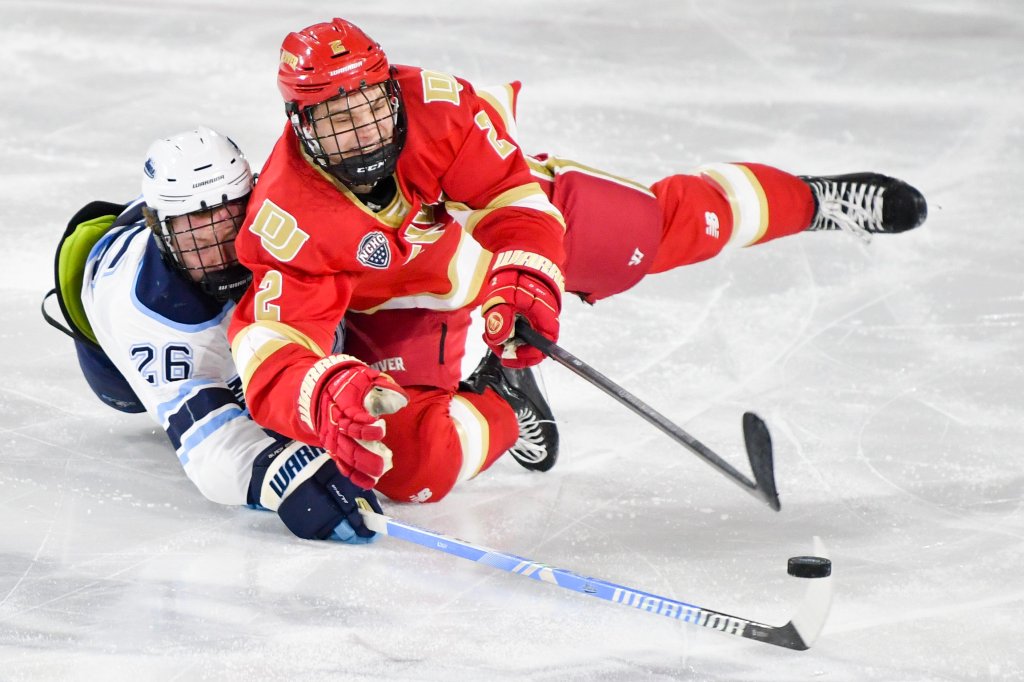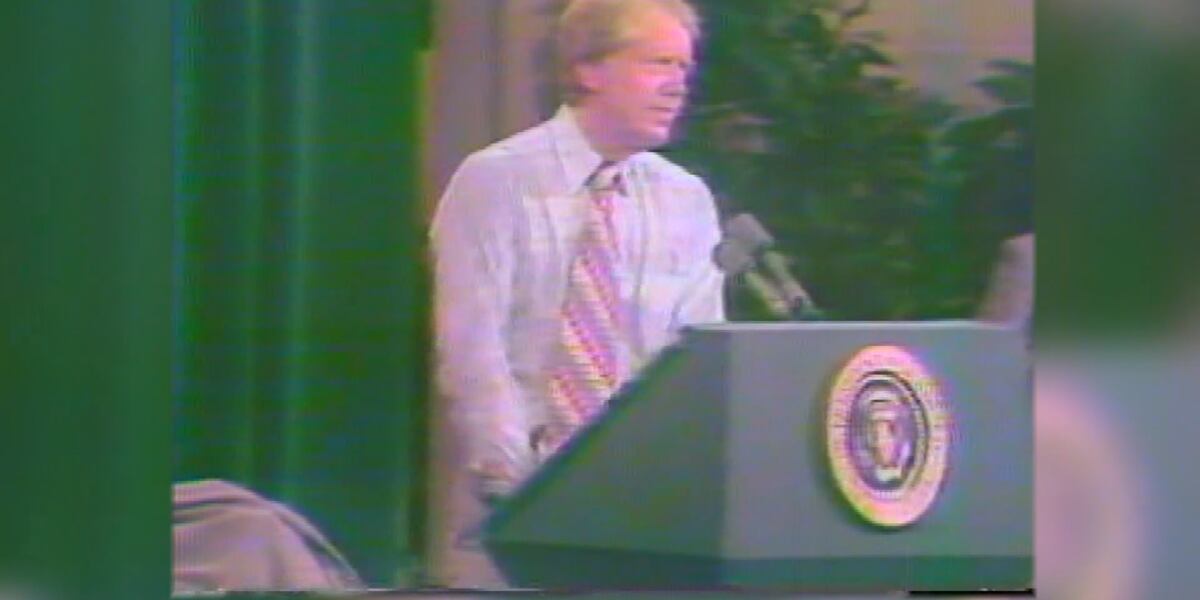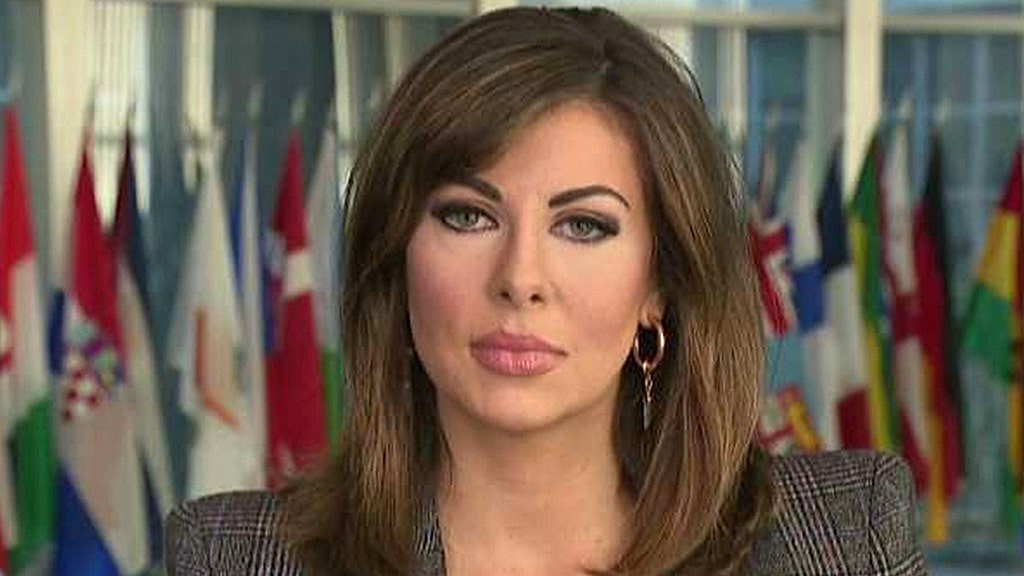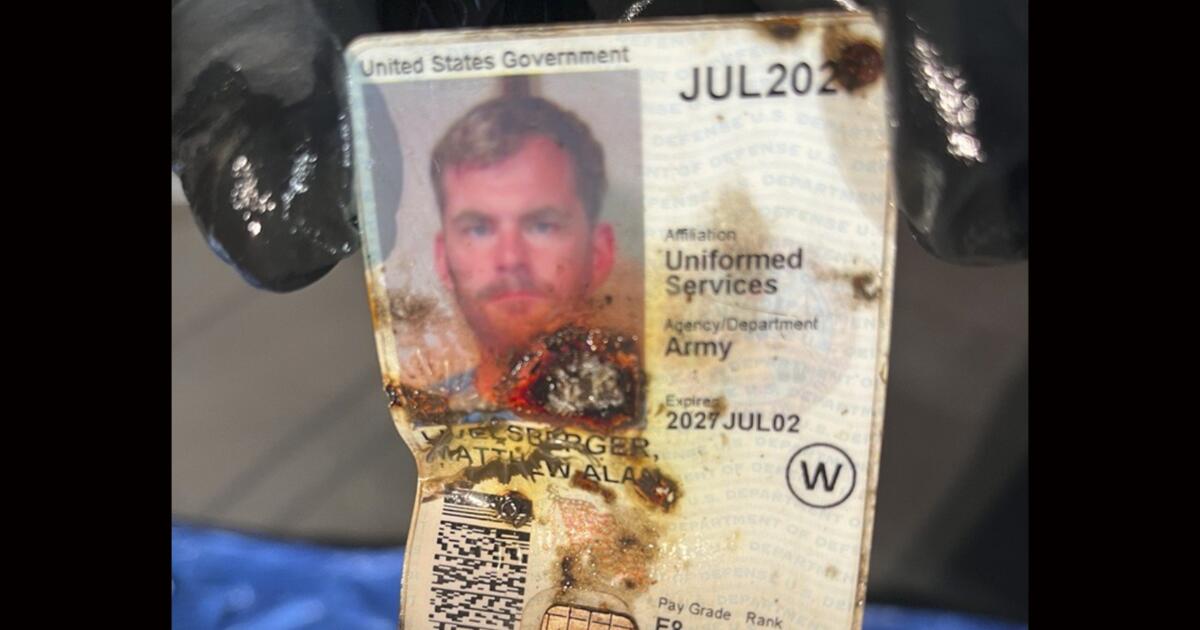Montana
What to expect in Montana on Election Day

WASHINGTON (AP) — When Montana voters cast ballots in the Nov. 5 general election, they’ll decide what may just be the nation’s marquee U.S. Senate race, and with it, perhaps which party will control the closely divided chamber in the next Congress. They’ll also vote on a high-profile ballot question on abortion, as well as less competitive races for president and governor.
Democrats control the U.S. Senate with a 51-49 majority. With Republicans all but certain to pick up retiring once-Democratic Sen. Joe Manchin’s seat in West Virginia, a GOP win in Montana would make it difficult for Democrats to keep their majority regardless of who wins the presidency.
Democratic incumbent Jon Tester faces a tough reelection bid for a fourth term against Republican Tim Sheehy. As one of only two Senate Democrats running for reelection in a state former President Donald Trump won easily in 2020, Tester is a perennial target for Republicans. In his past three races, he won with between 49% and 50% of the vote.
Tester has spent $71 million on the race as of the start of October, compared to about $11 million for Sheehy, a former Navy SEAL who has loaned his campaign $2.5 million. Outside groups have poured additional millions into the race.
Montana is also one of 10 states that will put a ballot question on abortion before voters in November. Officially known as “Constitutional Initiative No. 128,” the measure would enshrine a right to abortion before fetal viability in the state constitution.
At the top of the ballot, the presidential race is far less competitive. The last Democrat to carry Montana in a presidential election was Bill Clinton in 1992, although Barack Obama came close in 2008. Trump won Montana with 57% of the vote in 2016 and 2020, and the Democratic ticket has not set foot in the state this year. Tester skipped the Democratic National Convention in August and has declined to endorse Harris, although Sheehy has tried to link the senator to his party’s presidential nominee.
In the race for governor, Republican incumbent Greg Gianforte faces Democrat Ryan Busse.
Here’s a look at what to expect in the 2024 election in Montana:
Election Day
Nov. 5.
Poll closing time
10 p.m. ET.
Presidential electoral votes
4 awarded to the statewide winner.
Key races and candidates
President: Harris (D) vs. Trump (R) vs. Robert F. Kennedy Jr. (We the People) vs. Chase Oliver (Libertarian) vs. Jill Stein (Green).
U.S. Senate: Tester (D) vs. Sheehy (R) and two others.
Governor: Gov. Greg Gianforte (R) vs. Ryan Busse (D) and one other.
Ballot measures: Constitutional Amendment 126 (top four primary), Constitutional Amendment 127 (require majority vote to win election), Constitutional Amendment 128 (right to abortion).
Other races of interest
U.S. House, Attorney General, Auditor, Secretary of State, Superintendent of Public Education, state Supreme Court, state Supreme Court clerk, state Senate, state House and Public Service Commission.
Decision Notes
Montana technically isn’t one of the states that conducts its elections predominantly by mail, but quite a few Montanans choose to vote that way regardless. In the 2018 midterm elections, about three-quarters of the total votes cast were done so by mail. That shot up to 98% in the 2020 general election at the height of the COVID-19 pandemic.
State law allows elections officials to start processing and verifying mail ballots up to three days before Election Day. Machine counting of mail ballots may begin the day before Election Day.
In the 2020 U.S. Senate race, about 76% of the vote had been tabulated by 2 a.m. ET and 89% by 6 a.m. ET.
In statewide elections, Republicans tend to carry the populous counties of Yellowstone (home of Billings) and Flathead by comfortable margins and 30 or so small, rural counties by huge margins. Democrats, whether they win or lose statewide, usually carry at least six counties ranging from big (Missoula, population 117,922 ) to small (Deer Lodge, population 9,421 ). President Joe Biden and Hillary Clinton carried these six counties despite losing statewide by 16 and 20 percentages points respectively. Biden picked up a seventh small county, Blaine.
Two Democrats who won statewide in recent elections, Tester in 2018 and former Gov. Steve Bullock in 2016, both carried 13 counties: the seven Biden counties from 2020, plus Hill, Roosevelt, Lake, Lewis & Clark (home of Helena, the state capital), Cascade (home of Great Falls) and Park.
Of those, the results in vote-rich Lewis & Clark and Cascade may be the most revealing on election night. Both Tester and Bullock carried Lewis & Clark with roughly 60% of the vote. Biden received about 47% of the vote and Clinton about 42%. Cascade is tougher. Tester and Bullock received 51% and 54% there, respectively, compared to the mid-to-high 30%-range for Biden and Clinton. When Bullock lost the U.S. Senate race to Republican Steve Daines in 2020, he hung on to Lewis & Clark but lost Cascade by a double-digit margin. He also lost Hill, Lake and Park counties.
Warning signs for Tester on election night would be losing Lewis & Clark or winning there with closer to 50% of the vote rather than 60%, or if he loses Cascade or dips below roughly 60% in the Democratic stronghold of Missoula.
The Associated Press doesn’t make projections and will declare a winner only when it has determined there is no scenario that would allow the trailing candidates to close the gap. If a race hasn’t been called, the AP will continue to cover any newsworthy developments, like candidate concessions or declarations of victory. In doing so, the AP will make clear it hasn’t declared a winner and explain why.
Recounts are automatic in Montana if the vote is tied. Candidates may request a recount if the vote margin is less than 0.25% of the total vote or less than 0.5% if the candidate pays for it. The AP may declare a winner in a race that is eligible for a recount if it can determine the lead is too large for a recount or legal challenge to change the outcome.
Past presidential results
2020: Trump (R) 57%, Biden (D) 41%, AP race call: Wednesday, Nov. 4, 2020, 12:20 a.m. ET.
Voter registration and turnout
Registered voters: 782,176 (as of Oct. 16, 2024).
Voter turnout in 2020 presidential election: 80% of registered voters.
Pre-Election Day voting
Votes cast before Election Day 2020: about 98% of the total vote.
Votes cast before Election Day 2022: about 81% of the total vote.
Votes cast before Election Day 2024: See AP Advance Vote tracker.
How long does vote counting take?
First votes reported, Nov. 3, 2020: 10:06 p.m. ET.
By midnight ET: about 50% of total votes cast were reported.
Copyright 2024 The Associated Press. All rights reserved.

Montana
Montana legislative leaders discuss expectations for the 2025 session

HELENA — On Friday, with just three days to go before the start of the Montana Legislature’s 69th session, lawmakers were already at the State Capitol – some going through trainings on state law and the budget, others laying out their priorities for the session.
However, the real work starts on Monday. Legislators will have 90 working days to make decisions on key issues for people across the state, from taxes to health care to housing.
Republicans again hold the majority in both the House and Senate – as they have for every session since 2011. Sen.-elect Matt Regier, R-Kalispell, the incoming Senate president, says he’s expecting a “conservative bent” to the session, especially in light of the Republican victories at the federal level.
Regier says he believes it’s not a matter of whether lawmakers will approve tax relief this session, but of how much relief they’ll approve and how it will be done. During the 2023 session, Republican leaders endorsed a package of six tax- and budget-related bills that moved quickly through the process. Regier said it may be different this time around.
“I don’t picture it going through fast and unanimous at all,” he said. “Everybody’s got an idea of where they want to cut taxes: The governor obviously wants income tax, I know the Senate wants property tax, they’re talking about vehicle license fees – that goes to the general fund and it doesn’t need to – whether it’s child tax credit, veterans’ pensions, Social Security exemption – there’s been a lot of ideas floated around in the Senate.”
Regier said he believes his caucus wants to take a harder look at the state budget, to find areas where they can address spending.
Democrats in the Legislature have said tackling what they call a “crisis of affordability” in Montana is their top goal. They want to prioritize property tax relief as well, though they’ve argued their own proposals will be focused on targeting that relief to lower- and middle-income Montanans. They want to see more state investment in child care and in public schools, and to increase support for affordable housing.
House Minority Leader Rep. Katie Sullivan, D-Missoula, believes, despite differences, there are still areas where Democrats can find common ground with Republicans.
“I think the people of Montana have made it quite clear what we need to do when we get to Helena in January, and that includes property tax relief, housing costs, affordability of our everyday-to-day lives,” she said. “I think those are all big areas for bipartisan support, and I do expect that we work together to get those things done as quickly as possible.”
Sullivan also said she hopes the Legislature will act quickly to extend Montana’s Medicaid expansion program, so it doesn’t hang over the entire session. Republicans in the Legislature remain split on whether to continue the program.
One area GOP leaders are putting special emphasis on this session is proposed legislation to reform Montana’s judicial branch. Regier and House Speaker Rep. Brandon Ler, R-Savage, held a news conference at the Capitol Friday morning to highlight some of the 27 draft bills that came out of a Republican-led committee during the interim.
During the last two sessions – dating back to a 2021 dispute – Republicans have accused judges of systemic bias against conservatives and of issuing rulings that overstepped their proper authority. Those arguments have continued after more rulings this year – notably the Held v. Montana climate change lawsuit.
“With the egregious overreach of our judicial branch. I believe it is our job as the Legislature to do our due diligence in being their check and balance on government,” said Ler Friday.
Some of the most notable proposals include making judicial elections partisan, creating a new “Court of Chancery” appointed by the governor to handle business and constitutional cases, and changing the procedures for evaluating and disciplining judges.
Democrats have consistently pushed back against what they call “attacks on the judiciary,” and they refused to participate in the committee that proposed the 27 bills. Senate Minority Leader Sen. Pat Flowers, D-Belgrade, said he believed judges are doing their jobs properly, but that legislative leadership simply didn’t like the rulings.
“If you weaken the judicial branch, you are in effect weakening the power of our constitution,” he said. “We know Montanans love their constitution, and we want to make sure that our judges have the ability, in an impartial way, to uphold the integrity of that constitution. We’re going to do everything we can to make sure that we can deliver that for Montanans.”
The 2025 legislative session will officially get underway on Monday, Jan. 6, at noon, when House and Senate members take the oath of office.
Montana
How Do Montana State, North Dakota State Compare To Past FCS National Championship Contenders?

As we prepare for the 2025 FCS National Championship game, we wanted to take a look at how Montana State and North Dakota State compare to previous teams who have made appearances in the FCS national title game over the past five seasons.
Do these teams belong in the same conversation as last season’s South Dakota State team or the 16-0 North Dakota State team in 2019? We examine both teams in this season’s national title game and compare them to those who have appeared in the national title game in the last five full seasons. Due to the unique format of the season, we excluded the shortened spring 2021 season.
We utilized several advanced metrics, including the Massey Power Rating, Sagarin Power Rating, and College Football Reference’s Simple Rating System (SRS). The SRS is not logged for FCS teams, but we have utilized their formula to make our own SRS for teams at the FCS level. The calculation is straightforward, using the average margin of victory and strength of schedule.
|
Massey Power Rating |
Sagarin Rating |
SRS |
|
|---|---|---|---|
|
2024 Montana State |
53.5 |
76.6 |
26.2 |
|
2024 North Dakota State |
55.8 |
76.3 |
25.7 |
|
2023 South Dakota State |
62.8 |
83.3 |
24.3 |
|
2023 Montana |
49.9 |
69.1 |
15.9 |
|
2022 South Dakota State |
58.8 |
76.0 |
25.9 |
|
2022 North Dakota State |
55.3 |
69.7 |
18.9 |
|
2021 North Dakota State |
63.3 |
76.3 |
23.3 |
|
2021 Montana State |
52.3 |
65.1 |
18.4 |
|
2019 North Dakota State |
61.4 |
78.6 |
24.4 |
|
2019 James Madison |
57.2 |
72.8 |
22.3 |
Both teams this season compare favorably with the past four FCS national champions. Montana State has the second-highest adjusted margin of victory, winning by an average of 19.1 points per game. It only trails the 2019 North Dakota State team, which defeated opponents by an average of 19.3 points per game.
The most interesting takeaway is that this is the first matchup in the FCS National Championship in the past five full seasons in which both teams appear to be playing at a championship standard. Analytically, this is the closest gap between the teams playing in the national championship in the past five seasons.
This should be no surprise to fans, who have seen dominant performances over the past few seasons in Frisco. The average margin of victory in the past five national championships has been 16.4 points, with the closest game being Sam Houston State’s two-point win over South Dakota State in the spring of 2021.
If you were to average these three metrics together, they would rank as follows:
1. 2023 South Dakota State (56.8)
2. 2019 North Dakota State (54.8)
3. 2021 North Dakota State (54.3)
4. 2022 South Dakota State (53.6)
5. 2024 North Dakota State (52.6)
6. 2024 Montana State (52.1)
7. 2019 James Madison (50.8)
8. 2022 North Dakota State (47.9)
9. 2021 Montana State (45.3)
10. 2023 Montana (44.9)
Every metric we analyzed indicates that Monday’s game could be an instant classic. Both teams rank much closer to recent FCS national champions, compared to the runner-ups over the past five seasons.
No. 1 Montana State will face No. 2 North Dakota State in the 2025 FCS National Championship game in Frisco, Texas. Kickoff is scheduled for Jan. 6 at 6 p.m. CT on ESPN.
Behind The Numbers: FCS National Championship Preview
FCS National Championship: Offensive Spotlight
FCS National Championship: Defensive Spotlight
History Of The FCS National Championship Game
2024 FCS Playoffs: Official Bracket, Schedule, Scores
Follow FCS Football Central on social media for ongoing coverage of FCS football, including on X, Facebook, and YouTube.
Montana
Montana hits Yellowstone with lawsuit over bison plan
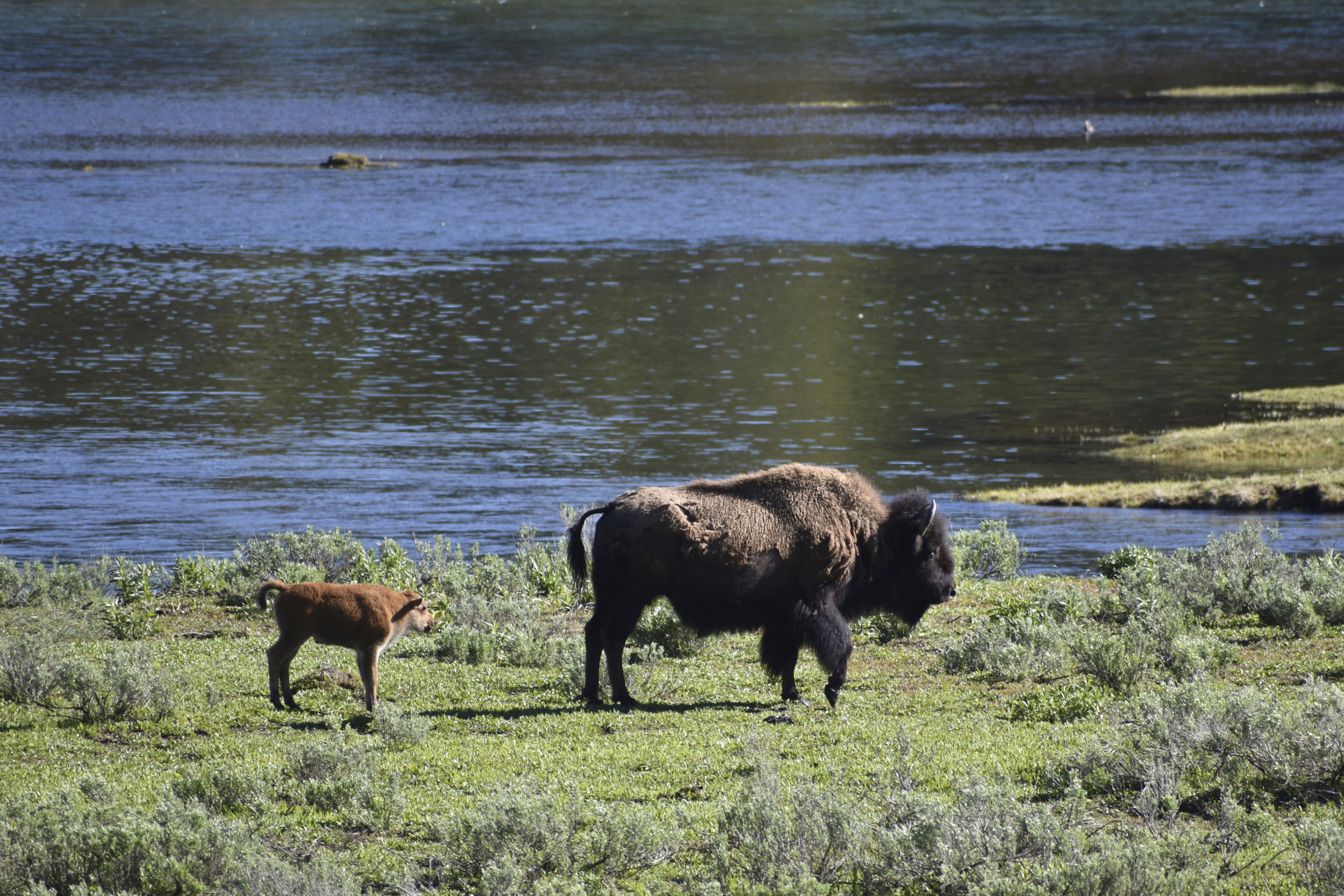
Montana Governor Greg Gianforte and two agencies have raised a lawsuit to challenge the Yellowstone National Park’s way of managing its bison herd, arguing that it violates federal laws.
Newsweek has contacted the Yellowstone National Park’s press office for comment via email outside normal business hours.
Why It Matters
The clash between Montana and the National Park Service, among other officials and entities that maintain the sprawling park, stems from state authorities’ belief that the park’s plan to manage its bison herd doesn’t do enough to reduce the risk of brucellosis transmission.
Though a bacterial disease that mainly infects cattle, swine, goats, sheep and dogs, brucellosis can be transferred to humans if a human has direct contact with an infected animal, or if they eat or drink contaminated animal products.
Matthew Brown/AP
What To Know
On December 31, Gianforte’s office, Montana’s Department of Livestock and its Department of Fish, Wildlife and Parks filed a lawsuit over Yellowstone National Park’s bison management plan.
In a news release about the lawsuit, the state government said its concerns had been ongoing since 2022, when the national park first announced its intent to draft the plan.
In 2023, Gianforte criticized the park’s bison management, citing Yellowstone National Park’s “failure to meet its own mandates,” a lack of cooperation of the park with the state of Montana, and deficient and misstated analysis.
According to the lawsuit, the size of Yellowstone National Park’s bison herd has been a “source of constant strife” in the state, as the boom in the bison population has increased the spread of brucellosis.
Yellowstone National Park and Montana adopted bison management plans in 2000 to tackle the issue, the lawsuit added, with a goal of keeping the bison herd to 3,000 while combating the spread of the disease.
“Over the last 20 years, YNP has utterly failed to manage to the specified population target or implement critical elements of its plan,” the lawsuit said.
It added that the new plan developed by the park in 2024 “fails to comply with the National Environmental Policy Act (NEPA) and is a violation of the National Park Service Organic Act (NPSOA) and Yellowstone National Park Protection Act (YNPPA).”
The new plan was also “developed without meaningful consultation and collaboration with one of its “cooperating agencies”…the State of Montana,” the lawsuit said.
What Is Yellowstone National Park’s Bison Management Plan
When Yellowstone National Park announced its new bison management plan last year, it said the Record of Decision, a culmination of the Environmental Impact Statement and National Environmental Policy Act process, allowed the National Park Service to manage the bison based on new scientific information that suggested the 2000 plan needed updating.
The new information related to how brucellosis could be regulated, the park announced in July. It added that the decision “continues the original purpose of the [Interagency Bison Management Plan from 2000] to maintain a wild, free ranging bison population and reduce the risk of brucellosis transmission from bison to cattle.”
The 2024 plan said the bison herd population would be managed in a range between 3,500 and 6,000, up from the goal of 3,000 in the 2000 plan.
The new plan also called for expanded bison hunting and greater bison freedom, allowing them to roam beyond the tolerance zones along the park’s northern and western edges, Montana Free Press reported.
According to the outlet, Tom McDonald, the vice chairman of the Confederated Salish and Kootenai Tribes of the Flathead Reservation, supported this element of the new plan.
McDonald told Montana Free Press that expanding where Yellowstone bison could go would help make tribal and state hunting safer, which is a method used to regulate the bison population.
What People Are Saying
Mike Honeycutt, the director of Montana’s Department of Livestock, said in a December 31 news release: “The Department of Livestock is committed to preventing, controlling and eradicating animal disease. Given the way NPS has ignored feedback from Montana, we have major concerns about potential threats to animal health from the possible spread of brucellosis.”
Christy Clark, the director of Montana’s Department of Fish, Wildlife and Parks, said in the release: “Bison represent a complex and contentious issue with both livestock producers and wildlife advocates. We had hoped for and asked for a better and more transparent process in developing this EIS. Those requests were ignored.”
Montana Governor Greg Gianforte said in the release: “The National Park Service has repeatedly and consistently failed to engage with the State in a meaningful and transparent manner as required by law throughout the planning process. NPS has not given us a fair shake and has ignored concerns raised by the State. We will always defend our state from federal overreach.”
Yellowstone Superintendent Cam Sholly said in July of the park’s 2024 bison management plan: “We have come a very long way since the last bison management plan was signed in 2000. This new plan solidifies much of the progress made over the past two decades and provides a foundation for future decision making. We appreciate the significant engagement on this plan by our affiliated Tribes, partners, and the general public.”
What Happens Next
The lawsuit requests that the Montana district court rule on whether Yellowstone National Park has violated federal law with its 2024 plan.
Do you have a story Newsweek should be covering? Do you have any questions about this story? Contact LiveNews@newsweek.com.
-

 Business1 week ago
Business1 week agoOn a quest for global domination, Chinese EV makers are upending Thailand's auto industry
-

 Health6 days ago
Health6 days agoNew Year life lessons from country star: 'Never forget where you came from'
-
/cdn.vox-cdn.com/uploads/chorus_asset/file/24982514/Quest_3_dock.jpg)
/cdn.vox-cdn.com/uploads/chorus_asset/file/24982514/Quest_3_dock.jpg) Technology6 days ago
Technology6 days agoMeta’s ‘software update issue’ has been breaking Quest headsets for weeks
-

 World1 week ago
World1 week agoPassenger plane crashes in Kazakhstan: Emergencies ministry
-

 Politics1 week ago
Politics1 week agoIt's official: Biden signs new law, designates bald eagle as 'national bird'
-

 Business3 days ago
Business3 days agoThese are the top 7 issues facing the struggling restaurant industry in 2025
-

 Politics1 week ago
Politics1 week ago'Politics is bad for business.' Why Disney's Bob Iger is trying to avoid hot buttons
-

 Culture3 days ago
Culture3 days agoThe 25 worst losses in college football history, including Baylor’s 2024 entry at Colorado
